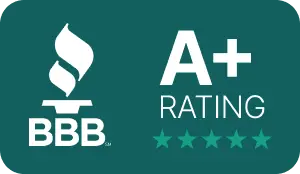Why Heirs Reach for Up-Front Cash
Probate rarely moves at the speed of an heir’s bills. Property taxes accrue, family buyouts loom, and personal credit cards start carrying balances that were never meant to be long-term. Two solutions promise immediate relief—an estate-level cash advance and an individual inheritance advance—but they are not interchangeable. Understanding where they diverge keeps families from taking on the wrong kind of obligation.
Framing the Two Products
Cash advance on an estate is a funding agreement executed by the personal representative on behalf of the estate itself. The advance is repaid from estate assets before any distribution. By contrast, an inheritance advance is a personal assignment: a single heir sells a slice of their expected share and carries the obligation alone. Both free up cash while probate unfolds, yet the legal mechanics, pricing engines, and risk profiles live on separate planets.
Common Ground—With Important Limits
Both structures are non-recourse against personal wages and credit, and they both sidestep monthly payments. Neither appears on consumer credit reports. Where they overlap ends quickly, however, once the conversation turns to contracting parties, collateral, and downstream cost.
Who Signs, Who Pays
In an estate-level deal, the executor signs, court permission may be required, and repayment comes off the top. The heirs’ shares simply shrink in proportion to the advance plus fees. In a personal inheritance advance, the heir signs, the court is usually not involved, and the heir alone bears repayment risk. If the estate’s liabilities consume the estate, the funding company should absorb the loss—provided the contract truly is non-recourse.
Cost Calculus Matters
Pricing starts with risk. Estate advances lean on tangible collateral, so rates generally track lower. Assignment-style inheritance advances place the funder behind creditors, taxes, and even sibling disputes; the premium is priced in. Heirs comparing offers often discover that choosing between a personal assignment and a probate loan can take the total cost from single-digit fees to double-digit equivalents, a swing explored in cost breakdown comparisons.
When a Six-Figure Infusion Fits
Every so often, liquidity needs explode—commercial real-estate buyouts, estate tax installments, or high-stakes investment opportunities that can’t wait eighteen months. In those moments, a mid-to-high six-figure inheritance advance—structured as a personal assignment—may be the only realistic bridge. The economics, thresholds, and safeguards that make such a move rational are unpacked in strategic six-figure funding scenarios.
Real-Estate Heirs Face Extra Friction
Property rarely aligns with probate’s clock. Insurance lapses, winterization bills, and co-owner stalemates can turn a home into a liability fast. Executors sometimes reach for an estate loan secured by the property, while individual heirs consider refinancing in their own name. Deciding whether to saddle the estate or refinance privately requires a point-by-point look at lien priority, interest accrual, and title seasonality, mirroring the contrasts laid out in estate-versus-mortgage financing guides.
Speed: The Silent Differentiator
A personal inheritance advance can close in as little as 48 hours once documentation lands—no court order, no notice to co-heirs. Estate-level advances add probate court paperwork and, in some jurisdictions, formal hearings. That difference can stretch closing times from days to weeks. For heirs triaging medical bills or tuition deadlines, hours count, echoing the timeline realities revealed in funding-speed case studies.
How Long Will Probate Really Take?
Choosing between products is impossible without an honest timeline. A solvent, uncontested estate in California might clear in nine months; a multi-state estate with real property in three jurisdictions can linger for years. Setting realistic expectations not only prevents sticker shock on funding fees but also guards against over-borrowing, a lesson that emerges repeatedly in probate-duration analyses.
Decision Matrix for Families
- Assess urgency Can non-urgent expenses wait? If yes, consider weathering probate without any advance.
- Map collateral Highly liquid brokerage accounts favor estate advances; illiquid personal property tilts toward personal assignments.
- Compare cost curves Run total-fee projections at six, twelve, and eighteen months; faster settlements can flip the cheaper choice.
- Gauge family harmony If siblings distrust each other, a personal inheritance advance isolates risk and preserves relationships.
- Check court rules Some states impose caps, notice periods, or outright bans on estate-level borrowing. Compliance can be a gating issue.
Mitigating Regret
Whatever path an heir chooses, insisting on plain-English contracts, capped repayment multiples, and transparent illustrations shields families from surprises. Reputable funders will model best-case, median, and worst-case durations so heirs see the true dollar impact of delay. A firm that balks at those models should raise alarms.
Final Thought—Liquidity Is a Tool, Not a Windfall
Both estate advances and inheritance advances solve the same problem: cash today, certainty tomorrow. Use them surgically, in the smallest amount that restores financial stability. Deployed wisely, they buy time for thoughtful decisions, preserve credit, and keep inherited assets from slipping through your fingers during a long probate winter.








